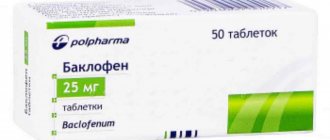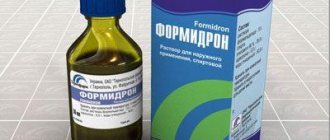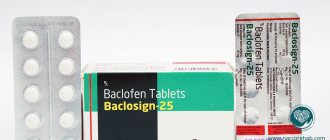Strong painkillers pharmacological agents help some people survive intense pain caused by various pathological processes and diseases, while others, on the contrary, lead to the abyss and death. Unauthorized use of some painkillers leads to the formation of stable addiction. One of these pharmaceuticals is oxycodone, which is successfully used in traditional medicine to relieve intense pain.
Oxycodone comes in different forms:
- pills;
- capsules;
- solution for intravenous and intramuscular injections.
The action of oxycodone is similar to that of codeine drugs. That is why he was so loved by drug addicts.
Oxycodone has analogues in Russia:
- Tylox
- Percodan
- Percocet
- Oxy
- Roxicet
- Oxycontin
Oxycodone hydrochloride, when used for non-medical purposes, has devastating effects on the body. Oxycodone addiction develops rapidly. Very often it is used by heroin addicts, under the illusion that by using this substance they will be able to “get off” their main drug. But instead of relief, they receive a new dependence in strength and gravity that is in no way inferior to the old one.
Oxycodone is used in different ways: taken in capsules and tablets, administered intravenously or intramuscularly.
Important Information
You should not use oxycodone if you have severe asthma or breathing problems, or a blockage in your stomach or intestines.
MISUSE OF OPIOID MEDICINE CAN CAUSE ADDICTION, OVERDOSE, OR DEATH.
Keep the medication in a place where others cannot get to it.
Taking oxycodone during pregnancy may cause life-threatening withdrawal symptoms in the newborn.
Fatal side effects can occur if you use opioid medicine with alcohol, or with other drugs that cause drowsiness or slow your breathing.
Oxycodone can slow or stop your breathing.
This is more likely in elderly or ill patients, but can occur in anyone taking this medicine.
Mechanism of action of the drug Oxycodone
Once in the body, oxycodone hydrochloride affects opioid receptors, which are located not only in the brain, but also in the spinal cord. Reactions begin that can not only relieve pain, but also cause a feeling of euphoria. The substance can pass into the placenta and breast milk, so if at the time of administration the expectant mother was abusing Oxy, then the likelihood that the child will be born dependent on Oxycodone is very high.
Physical and psychological dependence develops very quickly, the addict stops getting the desired result from the usual dosage, tolerance grows, and the dose has to be constantly increased.
With uncontrolled use of Oxycodone, overdose is possible; the substance has a depressing effect on the respiratory center, so if help is not provided, use can result in death.
OxyContin should also not be taken with alcohol or barbiturates. These substances enhance each other’s actions and the consequences of such a union can be life-threatening.
Fatal consequences of consumption
Like any narcotic drug, Oxycodone has a negative effect on all organs. Constant use of the drug is fraught with rapid addiction, prompting you to increase the dose each time, and stopping the drug leads to severe agony.
Uncontrolled intake of C18H21NO4 provokes in a drug addict:
- change in perception;
- respiratory dysfunction;
- spasm of the bronchial muscles and smooth muscles;
- weakening of the expectoration reflex;
- dehydration;
- mood changes (anxiety, depression, euphoria);
- sleep disorders;
- nervousness;
- confusion, memory gaps;
- headache;
- tremor, involuntary muscle contractions;
- epileptic seizures;
- decreased blood pressure;
- intestinal obstruction;
- nausea, vomiting;
- diseases of the gastrointestinal tract (tarry stools, diarrhea, gingivitis, hiccups);
- skin rashes;
- itching, dry skin;
- herpes simplex;
- frequent urge to urinate;
- decreased libido, impotence.
What to do if you overdose on Oxycodone
In such cases, you need to act immediately, putting aside all fear, since human life is at stake:
- Call an ambulance, be sure to describe the reason for the call.
- Talk to the person who is overdosing constantly. Don't let him fall asleep and lose consciousness.
- Open all windows to allow oxygen in.
- Unbutton the top buttons of his clothing to make breathing easier.
- If breathing stops, provide emergency assistance.
- Remain calm, as your adequacy at this moment is extremely important.
Before taking this medicine
You should not use oxycodone if you are allergic to it, or if you have:
- severe asthma or breathing problems; or
- a blockage in your stomach or intestines.
You should not use this medicine if you are already using a similar opioid medicine and are tolerant to it. Do not use this medicine if you have used a MAO inhibitor in the past 14 days, such as isocarboxazid, linezolid, phenelzine, rasagiline, selegiline, or tranylcypromine or have received a methylene blue injection.
Most brands of oxycodone are not approved for use in people under the age of 18. OxyContin
should not be given to a child younger than 11 years old.
To make sure this medicine is safe for you, tell your doctor if you have ever had:
- breathing problems, sleep apnea;
- a head injury, brain tumor, or seizures;
- drug or alcohol addiction, or mental illness;
- lung disease;
- liver or kidney disease;
- thyroid disorder;
- adrenal disease (such as Addison's disease;
- urination problems; or
- problems with your gallbladder or pancreas.
If you use opioid medicine while you are pregnant, your baby could become dependent on the drug.
This can cause life-threatening withdrawal symptoms in the baby after it is born. Babies born dependent on opioids may need medical treatment for several weeks. Tell your doctor if you are pregnant before using oxycodone. If you become pregnant while taking oxycodone, do not stop your medication suddenly without talking to your doctor. You may need to decrease your medicine gradually.
Oxycodone can pass into breast milk and may cause drowsiness or breathing problems in a nursing baby. Tell your doctor if you are breastfeeding before using oxycodone.
What effect does OxyContin cause?
Oxy (Oxycodone, OxyContin), as we wrote above, is close in effect to codeine drugs. When the dosage is exceeded, it causes euphoria, a feeling of carelessness, and lightness. Problems recede into another plane and the addict gets the impression that Oxycodone makes him happy. The effect occurs a few minutes after the substance enters the human blood and lasts up to 6 hours.
But the addict experiences such sensations only at the first stages of use. These feelings are replaced by a real withdrawal – withdrawal syndrome caused by the absence of the drug. At these moments, the state of health deteriorates sharply, the addict feels unwell, namely:
- violation of the body temperature regime - it throws you either hot or cold. Either he sweats profusely or feels chills.
- nausea or even vomiting;
- upset stomach, diarrhea;
- headache;
- depressed psycho-emotional state.
With frequent use of Oxycodone hydrochloride, the relaxed state is replaced by activity and vigor. The substance is integrated into the internal processes of the body, and when the addict does not receive the next dose of the drug, he feels tired. It’s as if all his energy has been taken away from him; he doesn’t even have enough strength to just get out of bed, let alone carry out everyday activities. A drug addict can even neglect his hygiene - he stops observing its basic rules. Such changes indicate an already formed dependence on Oxycodone.
Medical use and signs of use
This substance belongs to the group of opioid agonists, which are the most effective painkillers. They are characterized by increased effect when taking large doses. It is worth noting that other drugs have certain thresholds for effectiveness.
It is thanks to this effect that OS has been actively used in medicine to treat patients with chronic pain. At the moment, tablets are still produced by some companies for the treatment of cancer patients. Most often, the medicine is combined with aspirin or paracetamol.
Signs of receiving OS include:
- Constipation.
- Nausea.
- Weakness.
- Vomit.
- Excessive calm.
- Dizziness.
If the dose is greatly exceeded, overdose or even death occurs. The effect after taking the next dose lasts 5 hours. And the sensations themselves are similar to opiate drugs - complete peace, accompanied by euphoria.
Help your loved one get back on the right path! Leave your phone number and our specialists will contact you!
How to Recognize an Oxycodone Addict
Signs of Oxy use are difficult to go unnoticed:
- The pupils are constricted, there is no reaction to light.
- Pale and dry skin.
- Excessive thinness.
- Changing the daily routine - the addict stays awake at night and sleeps during the day.
- Changing your social circle.
- Loss of interest in family matters.
- Self-isolation.
- Deterioration of teeth, bleeding gums.
- Hair loss.
- Insomnia or, conversely, a constant need for sleep.
- Frequent mood changes.
- General apathy.
- Confused, slow speech.
- Impaired coordination of movements.
With long-term use of OxyContin, you may notice the following changes:
- Depression.
- Absent-mindedness.
- Memory lapses, difficulty remembering simple information.
- Decreased intellectual functions.
- Difficulty formulating thoughts.
- Degradation.
- Anxiety.
- Irritability.
Just like with other types of drug addiction, the drug disrupts the functioning of all vital systems, so OxyContin abusers may develop the following diseases:
- Impaired liver and kidney function.
- Interruptions in the functioning of the heart.
- Irreversible damage to the central nervous system.
- Gastrointestinal diseases.
- Convulsions of the limbs.
- Panic attacks.
Alternative ways to cope with pain
People can manage even mild pain with over-the-counter pain medications, including:
- aspirin;
- ibuprofen;
- acetaminophen.
A person who experiences moderate to severe pain can discuss pain management options with their doctor. For long-term treatment of chronic pain, which is pain that lasts for several months, prescription opioids such as oxycodone are not a primary option.
Ways to manage chronic pain without medications include:
- Acupuncture, yoga, and tai chi: A 2022 systematic review reports that these treatments can provide short-term mild to moderate pain relief for people with chronic back pain.
- Music: A 2022 systematic review and meta-analysis shows that people report reduced chronic pain and depression when listening to music.
- Mindfulness Meditation: A Systematic Review and Meta-Analysis 2017 notes that mindfulness meditation may improve pain symptoms and that scientists need more research to say for sure how effective it is.
How to Quit Oxycodone
Oxycodone, like any other drug, cannot be quit on its own. Powerful psychological and physical dependence on the substance will suppress the will of the addict, and he will return to use again and again. Drug addiction is a disease that requires a professional approach to treatment. Quitting the drug should take place exclusively under the supervision of a doctor, so that if the condition worsens, qualified assistance is provided.
It is necessary to begin treatment with complete cleansing of the body. Toxins are poisonous breakdown products of a drug; while in the body they continue to poison it, so detoxification is required.
After stabilizing the physical condition, it is necessary to begin working with the psychological craving for the substance. The addict has been using the substance for a long time as a certain anesthesia, an assistant to combat stress. Now, with the help of psychotherapy, he will have to find new behavior options that will use his needs, but will exclude drug use. Gradually, old patterns of behavior are replaced by new ones, the addict begins to feel true freedom from the substance, and his motivation for a sober life is strengthened. His past life now looks like a bad dream from which he finally woke up.
Before taking this medicine
You should not use oxycodone if you are allergic to it, or if you have:
severe asthma or breathing problems; or
A blockage in your stomach or intestines.
You should not use this medication unless you are already using a similar opioid medication and are tolerant to it.
Most brands of oxycodone are not approved for use by people under 18 years of age. OxyContin should not be given to a child under 11 years of age.
To make sure this medicine is safe for you, tell your doctor if you have:
history of head injury, brain tumor, or seizures;
history of drug abuse, alcohol dependence, or mental illness;
Liver or kidney diseases;
problems with your gallbladder, pancreas, or thyroid gland; or
If you are using a sedative such as Valium (diazepam, alprazolam, lorazepam, Ativan, Klonopin, Restoril, Tranxin, Stich, Xanac, etc.).
If you use oxycodone during pregnancy, your baby may become dependent on the drug. This can cause life-threatening withdrawal symptoms in the baby after birth. Babies born addicted may require treatment for several weeks.
Long-term use of opioid medications can affect fertility (the ability to have children) in men or women. It is unknown whether opioid effects on fertility are permanent.
Do not breastfeed. Oxycodone can pass into breast milk and may cause problems sleeping or breathing in nursing infants.
Based on the situation
Despite the high threat of the new strain, the regions are not making emergency decisions. For example, in the Republic of Crimea there are no plans to tighten restrictive measures yet.
— Today, in accordance with the latest edition of the decree of the head of the Republic of Crimea No. 63-U, QR codes in public places are canceled on the territory of the republic until January 20. But everything depends on the epidemiological situation. So far, no additional restrictions are planned,” the press secretary of the Chairman of the Council of Ministers of the Republic of Crimea told Izvestia.
In the Kaluga region, Izvestia was told that the medical system is ready for new challenges.
Strain call
Photo: IZVESTIA/Alexander Polegenko
“At a meeting of the regional headquarters to prevent the importation and spread of a new coronavirus infection, it was noted that 131 people infected with COVID-19 have been identified in the region over the past 24 hours,” the press service of the regional governor shared information. — The available bed capacity is 37%.
They added that inspections of compliance with the epidemiological regime in transport, shopping centers and public catering facilities continue in the region.
Delayed blow: how coronavirus will affect teenagers
The consequences of the pandemic threaten increased anxiety, fear of intimacy and cravings for hoarding
In Chuvashia, help for coronavirus patients with the Omicron strain will be provided on the basis of five medical organizations of the republic - they have more than 2 thousand beds. Transferring people to remote work and further tightening of restrictive measures are not yet planned. The press service of the Tula region told Izvestia that decisions on strengthening restrictive measures will be made at a meeting of the operational headquarters.
Chemistry
The chemical name oxycodone comes from codeine. The chemical structures of these substances are very similar, differing only in that oxycodone has a hydroxyl group on carbon-14 (codeine only has a hydrogen at this site). Oxycodone has its 7,8-dihydro function. Codeine has a double bond between these two carbon atoms; and oxycodone has a carbonyl group (as in ketones) instead of the hydroxyl group of codeine. Oxycodone is also similar to hydrocodone, differing only in that it has a hydroxyl group on carbon-14. Extended names for oxycodone in the scientific literature include "dihydrohydroxycodeinone", "Eucodal", "Eukodal", "14-hydroxydihydrocodeinone" and "Nucodan". In the UNESCO convention, translations of the word "oxycodone" are oxycodon (Dutch), oxycodone (French), oxicodona (Spanish), الأوكسيكودون (Arabic), 羟考酮 (Chinese) and oxycodone (Russian). Oxycodone should not be confused with oxandrolone, oxazepam, oxybutynin, oxytocin, or Roxanol. From a biosynthetic perspective, oxycodone is naturally found in nectar extracts from the orchid family Dremerica; together with other opioids: 3-{2-{3-{3-benzyloxypropyl}-3-indole and 7,8-didehydro4,5-epoxy-3,6-D-morphinane. Oxycodone is sold in various salts, most commonly as the hydrochloride salt. Free base conversion ratio of various salts: hydrochloride (0.896), bitartrate (0.667), tartrate (0.750), samphosulfonate (0.576), pectinate (0.588), phenylpropionate (0.678), sulfate (0.887), phosphate (0.763) and polyethylene terephthalate ( 0.792). The hydrochloride is the base of most American oxycodone products, while bitartrate, tartrate, pectinate, terephthalate and phosphate salts are also available in European products. Iodomethane and hydroiodide are mentioned in older European publications.
New threat
The main topic of Vladimir Putin’s first meeting this year with members of the government was gasification in the regions. However, at the beginning of the meeting, the focus was on issues related to the fight against coronavirus infection. This is not surprising, given that the whole world is now closely monitoring the new Omicron strain, which was identified in South Africa last November.
It is more contagious than its predecessors, including the Delta strain. And it has a shorter incubation period—an infected person can transmit the virus within a day or two after infection. As a result of the spread of Omicron, many countries around the world have seen a sharp rise in incidence in recent days. For example, in the United States, about 1.3 million new cases of COVID-19 infection were detected on January 10. Hundreds of thousands of new cases are recorded daily in a number of European countries.
Strain call
Participants of the meeting with government members (via videoconference)
Photo: press service of the Russian Presidential Administration/kremlin.ru
The strain means: how Omicron spread in the Russian Federation over the holidays
Epidemiologists do not rule out an increase in incidence after the January holidays
However, Russians should also prepare for new challenges. So far, 698 cases of infection with the new strain of coronavirus have been detected in our country, said Deputy Prime Minister Tatyana Golikova. Back on January 11, the head of Rospotrebnadzor, Anna Popova, said that the level of infection during the New Year holidays tripled - to 305 cases.
The majority are in Moscow. The situation with COVID in Russia remains difficult and new outbreaks of the disease are possible, Vladimir Putin confirmed.
“We understand that, most likely, the capital region, as, unfortunately, has already become a negative tradition, will bear the first blow of the spread of the new strain. Therefore, we assume that with such contagiousness, the incidence and detection rates of the new coronavirus infection may be exceeded many times over,” explained Tatyana Golikova, emphasizing that a new rise in incidence in the country due to the Omicron strain cannot be avoided.
The day before, Moscow Mayor Sergei Sobyanin noted that a significant increase in the incidence rate in Moscow could begin in the next 7-10 days. Meanwhile, the head of Rospotrebnadzor Anna Popova admitted that the number of new cases of coronavirus in Russia will exceed 100 thousand per day.
Against this background, the government intends to propose new measures to combat the infection by the end of the week. However, they will be accepted only if an “unfavorable scenario” develops, Tatyana Golikova clarified at the meeting.
Strain call
Photo: RIA Novosti/Alexander Kondratyuk
“This is a completely realistic scenario, and Russia is unlikely to be able to avoid a large surge in incidence. The danger of Omicron should never be underestimated. Opinions are periodically voiced that this is a “live vaccine,” that is, everyone will get a mild form of this strain and the pandemic will end. But this is not so,” Alexey Agranovsky, professor of the Department of Virology, Faculty of Biology, Moscow State University, told Izvestia. “We must understand that due to the large number of infected people, the number of hospitalized and fatal cases will increase one way or another.
Understand and pass: what symptoms of Omicron were listed by the Ministry of Health
And what did the government ask Russians to do on the eve of the holidays?









